Does a small wind turbine on your home increase self-sufficiency?


· 5 min read
“Every kilowatt hour counts.”
“The lights will go out in the dark winter months.”
“We need to break free from Russian fossil energy.”
These statements were heard by many politicians in Europe over the last twelve months. They have fueled a solar panel installation frenzy on residential buildings, which is certainly a move in the right direction.
As described in an earlier article, I have been pioneering solar-self sufficiency for almost 10 years on my own house, reaching self-sufficiency levels of 70–80% in the meantime thanks to my vertical panels and a building control system.
However, 70–80% is not 100%. So what can homeowners do to go beyond 70–80% of self-sufficiency?
Often, the first possibility that jumps to mind is wind power. Let’s look at the pros and cons.
Solar and wind power are complementary: While the sun shines only during daylight hours, wind is available 24/7. Furthermore, winds are stronger in winter than in summer, so they should compensate for lower solar power yields in winter.
Let’s look at some data from the residential area where I live. I am considering the period of November 2022 to February 2023 in this article, in order to cover the dark winter months where wind power should yield most of its benefits.
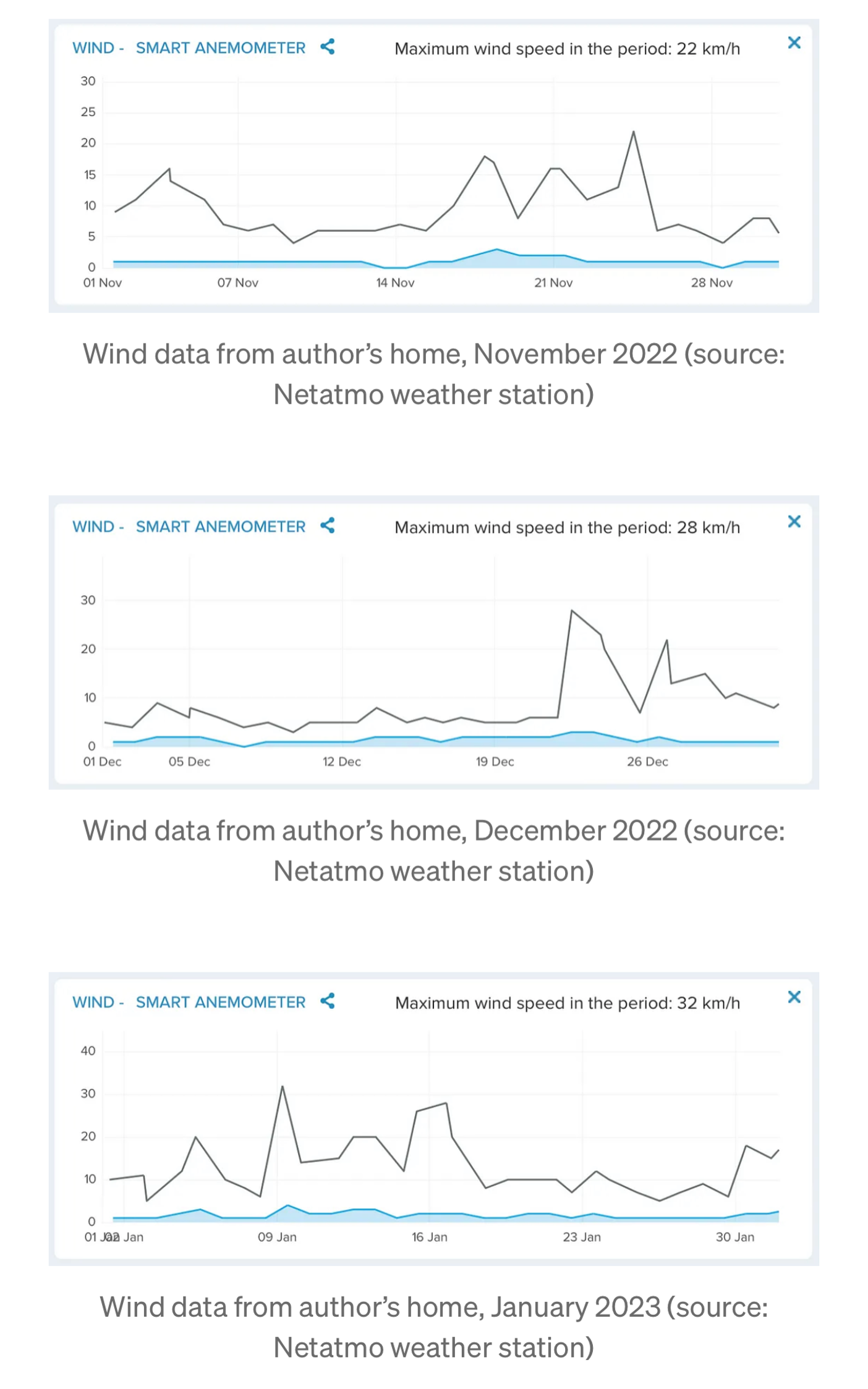
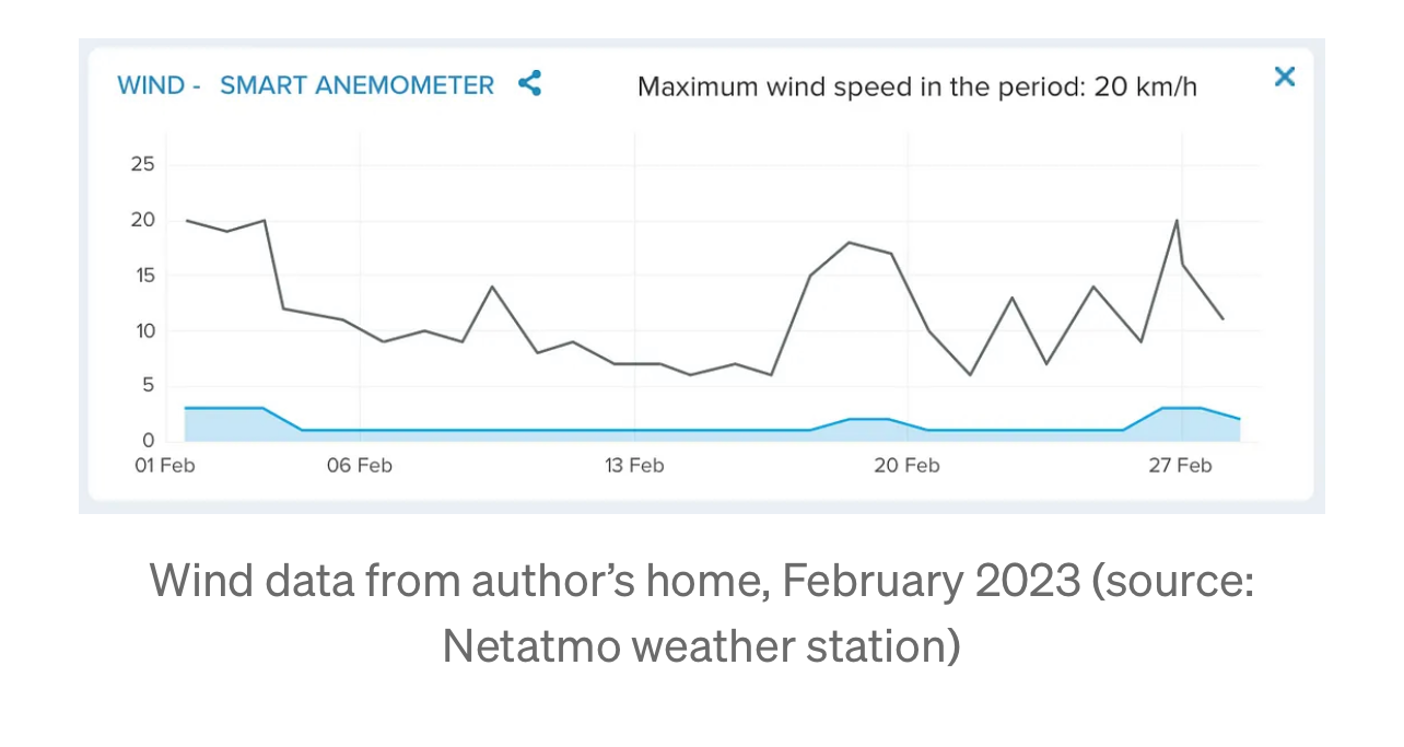
It looks like I am not living in a super windy region. That is understandable, as I live in the middle of a village in the flatlands. My wind gauge is on the carport, around 4 meters above the ground.
The blue line in the above charts shows the consistent winds, whereas the black line shows the maximum wind speed or the gusts.
It’s simple: the higher up you measure, the higher the wind speeds. And because wind power production increases disproportionately with increasing wind speed, you really want to earn higher wind speeds high above the ground.
Let’s look at an example. The SkyWind NG small wind turbine features the following power characteristics:
Cut-off speed: 4 m/s (i.e. no power production for wind speeds below 4 m/s)
The SkyWind NG is a small wind turbine of 1,000 W nominal power for residential use.
Using the measured wind data above, here is the energy that I could have produced in the months of November 2022 — February 2023 using one of those turbines:
This means that installing a small wind turbine on my carport at 4 m above the ground would make no sense whatsoever. However, assuming that I could earn the full gust winds on the rooftop of my house, 12 m above the ground, it might start to make sense.
Using the SkyWind NG product picture above and comparing this to the situation at my house, here is how the position of a small wind turbine would impact energy production:
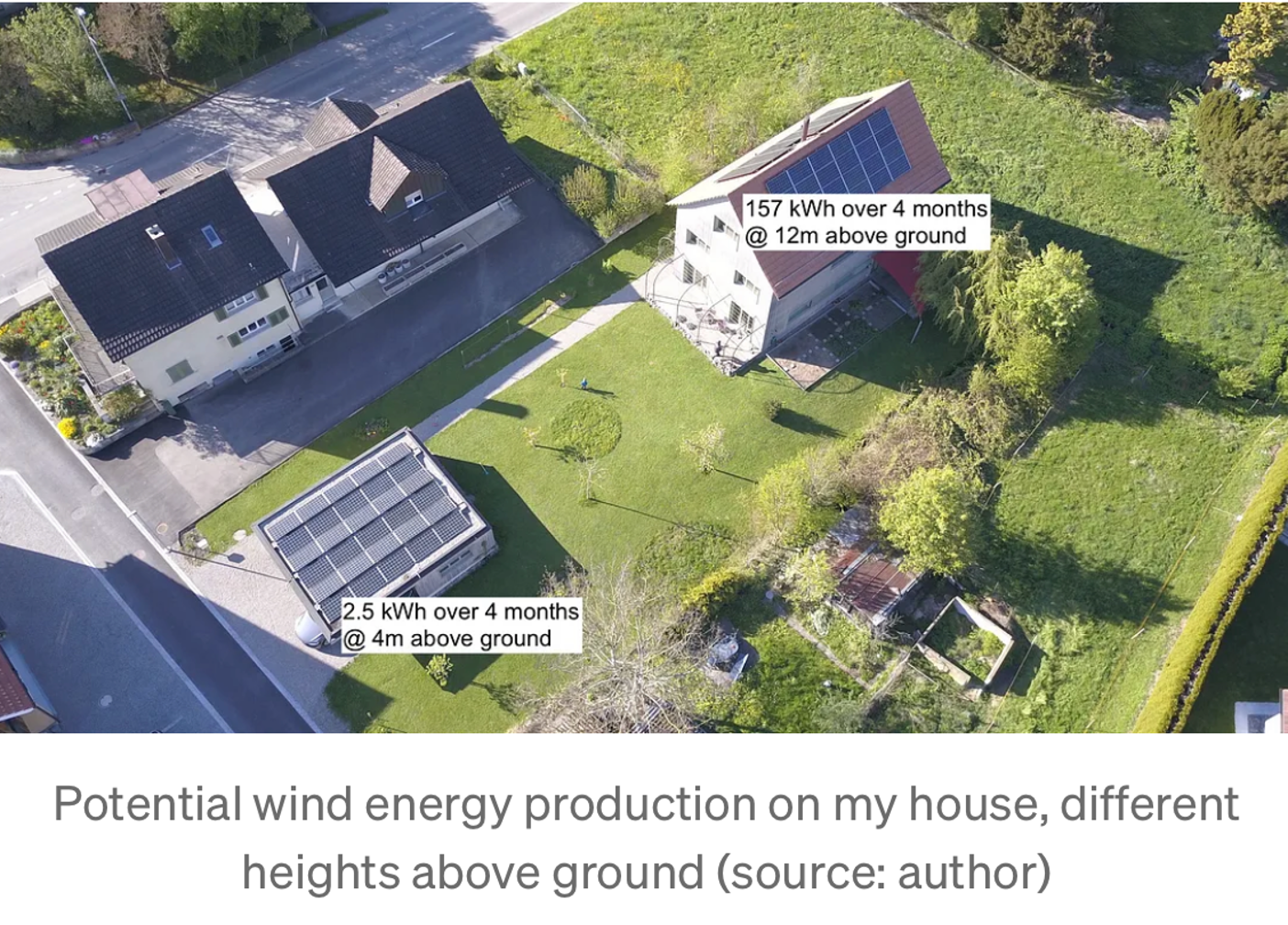
Now, how would 157 kWh between November 2022 and February 2023 impact the solar self-sufficiency of my house?
The increase in self-sufficiency is minimal, even when I would install a couple of those small wind turbines mentioned above:
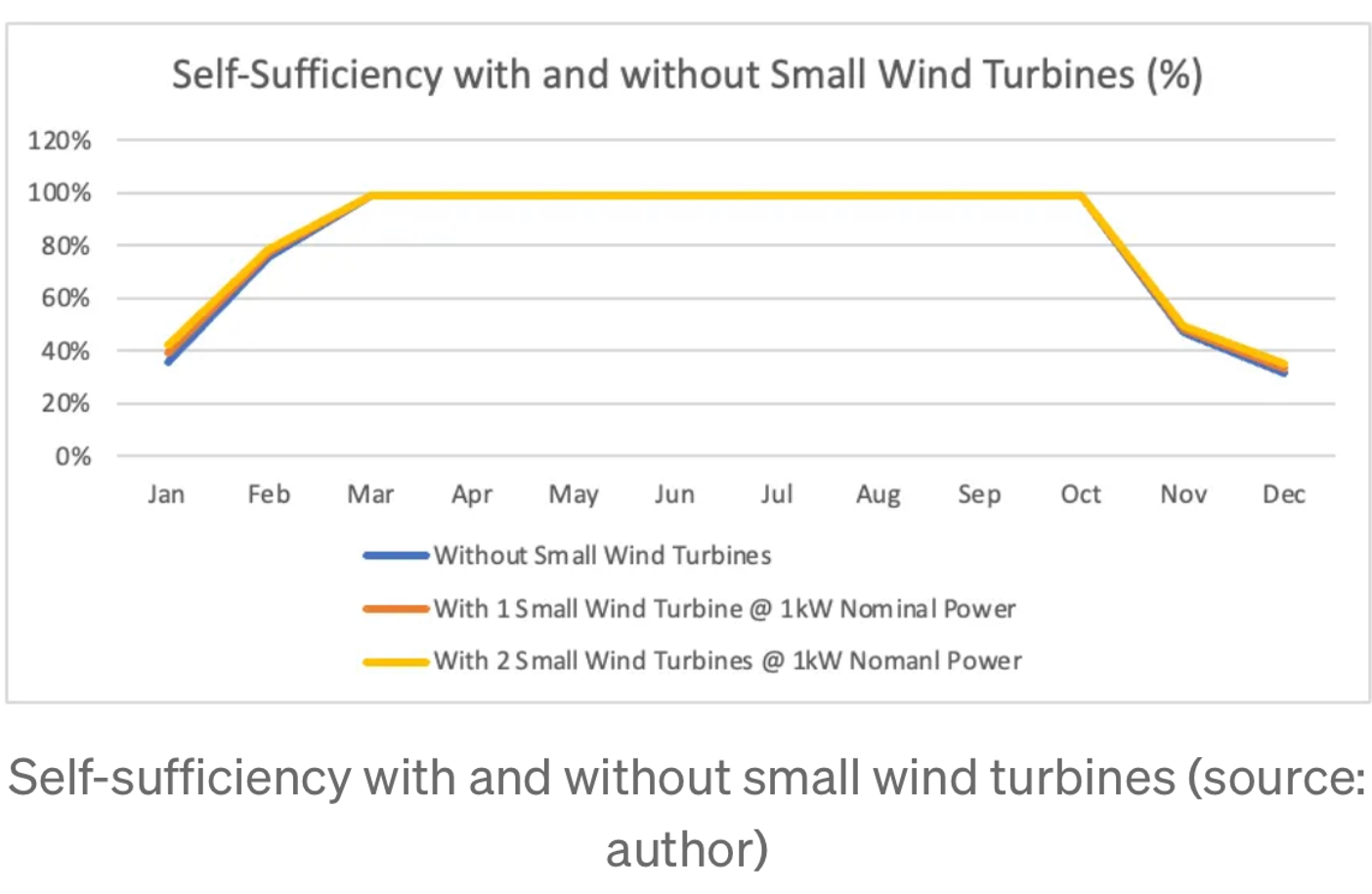
Compare this to the increase in self-sufficiency I achieved by installing vertical solar panels on the facade of my house:
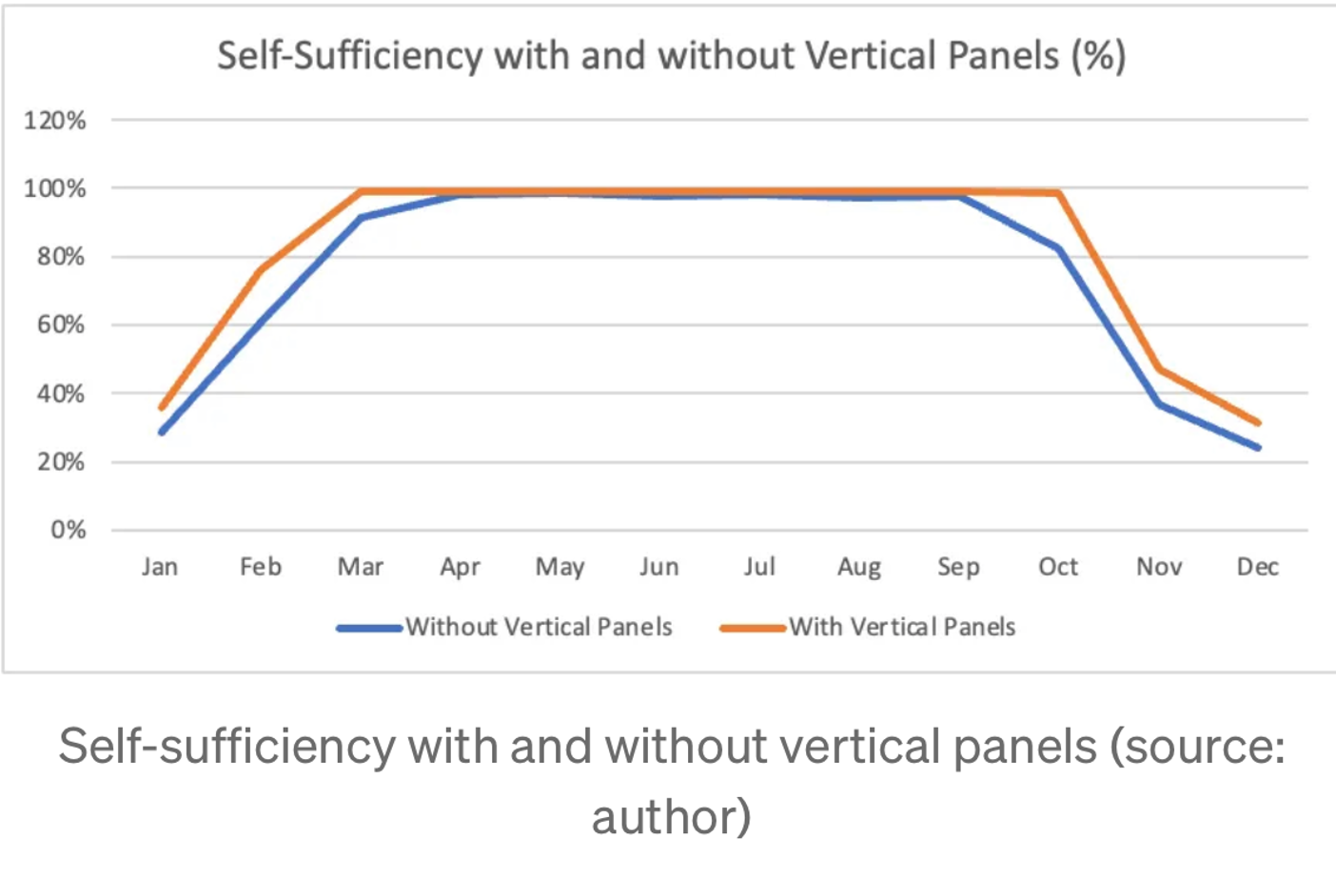 The critical points
The critical pointsSumming up, small wind turbines really have limited benefits in residential areas — unless you are living on the top of a hill, where wind speeds are constantly high.
Besides the fact that not all sites are suitable for wind power production, a few other points need to be considered before installing small wind turbines:
Wind power is a great technology, as it is available in abundance and it is complementary to solar power. However, I would think twice if it really makes sense to install small wind turbines on your home, or if you’d rather invest in a wind park with large turbines that can harvest the high wind speeds at higher altitudes above ground.
Generated kWh per invested dollar should guide your investment, not a misleading piece-of-mind feeling favoring high self-sufficiency at home.
This article is also published on the author's blog. illuminem Voices is a democratic space presenting the thoughts and opinions of leading Sustainability & Energy writers, their opinions do not necessarily represent those of illuminem.
Andrea Gori

Climate Change · Carbon
Yury Erofeev

Battery Tech · Mobility Tech
illuminem briefings

Renewables · Wind
Eurasia Review

Carbon · Wind
Eco Business

Wind · Renewables
Mirage News

Green Tech · Renewables